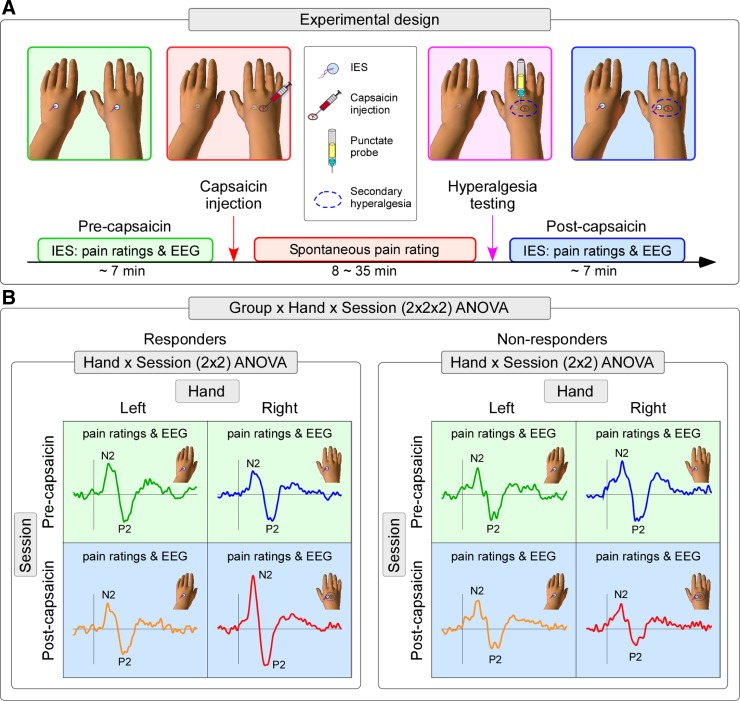Fig. 1.
A: experimental design. The state of central sensitization was induced by intraepidermal injection of capsaicin (red arrow on the timeline). Capsaicin-induced spontaneous pain lasted between 8 and 35 min, during which pain ratings were collected every 10 s during the first 3 min and then every 30 s until the pain intensity ratings were less than 5 out of 100 (red box). Psychophysical and EEG responses to intraepidermal electrical stimulation (IES) were collected before capsaicin injection (i.e., pre-capsaicin session; green box) and after capsaicin-induced spontaneous pain had disappeared (i.e., post-capsaicin session; blue box). The development of secondary hyperalgesia to punctate mechanical stimuli was assessed by the ratio of the subjective intensity ratings of the sensation evoked by stimulation of the right and the left hand (Right/Left; purple arrow on the timeline). Participants were considered responders if the ratio was ≥2, and nonresponders otherwise. B: schematic of the statistical analysis. A 3-way ANOVA with the factors of Group (responders, nonresponders), Session (pre-capsaicin, post-capsaicin) and Hand (left, right) was used to analyze both psychophysical and event-related potential (ERP) responses. The three-way interaction (Group × Session × Hand) indicated the effect of central sensitization on these responses. Further post hoc 2-way ANOVAs with the factors of Session and Hand were performed to define the effect within each group.

